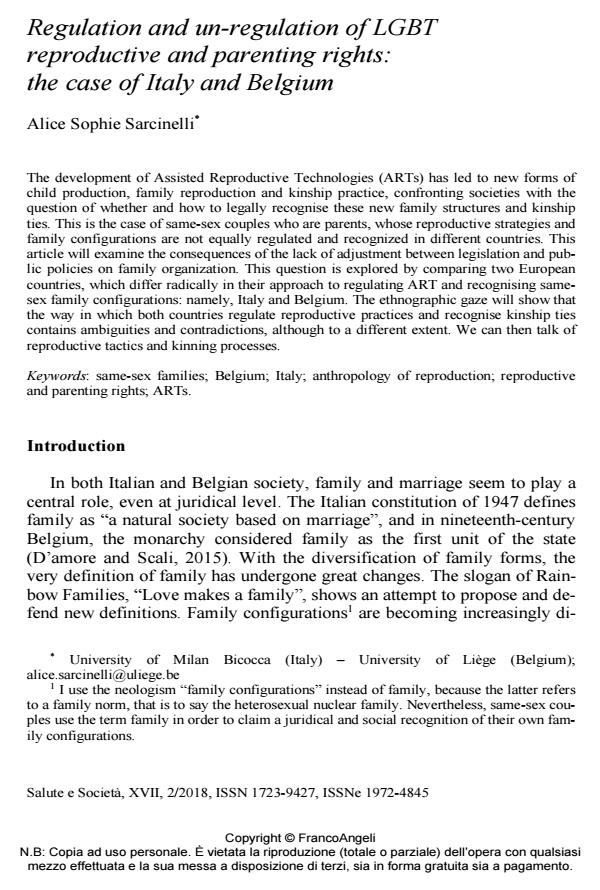Regulation and un-regulation of LGBT reproductive and parenting rights: the case of Italy and Belgium
Titolo Rivista SALUTE E SOCIETÀ
Autori/Curatori Alice Sophie Sarcinelli
Anno di pubblicazione 2018 Fascicolo 2018/2
Lingua Inglese Numero pagine 16 P. 90-105 Dimensione file 93 KB
DOI 10.3280/SES2018-002007
Il DOI è il codice a barre della proprietà intellettuale: per saperne di più
clicca qui
Qui sotto puoi vedere in anteprima la prima pagina di questo articolo.
Se questo articolo ti interessa, lo puoi acquistare (e scaricare in formato pdf) seguendo le facili indicazioni per acquistare il download credit. Acquista Download Credits per scaricare questo Articolo in formato PDF

FrancoAngeli è membro della Publishers International Linking Association, Inc (PILA)associazione indipendente e non profit per facilitare (attraverso i servizi tecnologici implementati da CrossRef.org) l’accesso degli studiosi ai contenuti digitali nelle pubblicazioni professionali e scientifiche
The development of Assisted Reproductive Technologies (ARTs) has led to new forms of child production, family reproduction and kinship practice, confronting societies with the question of whether and how to legally recognise these new family structures and kinship ties. This is the case of same-sex couples who are parents, whose reproductive strategies and family configurations are not equally regulated and recognized in different countries. This article will examine the consequences of the lack of adjustment between legislation and public policies on family organization. This question is explored by comparing two European countries, which differ radically in their approach to regulating ART and recognising same-sex family configurations: namely, Italy and Belgium. The ethnographic gaze will show that the way in which both countries regulate reproductive practices and recognise kinship ties contains ambiguities and contradictions, although to a different extent. We can then talk of reproductive tactics and kinning processes.
Parole chiave:Same-sex families; Belgium; Italy; anthropology of reproduction; reproductive and parenting rights; ARTs.
- Same-Sex Couples in Italy: Social, Legal and Economic Determinants to Parenthood Salvatore Monaco, Agnese Vitali, Rebecca Soldo, in Journal of Family Issues 0192513X251400267/2025
DOI: 10.1177/0192513X251400267 - Does love make a family? The politics and micro-politics of filiation among same-sex families Alice Sophie Sarcinelli, in L'Année sociologique /2018 pp.367
DOI: 10.3917/anso.182.0367
Alice Sophie Sarcinelli, Regulation and un-regulation of LGBT reproductive and parenting rights: the case of Italy and Belgium in "SALUTE E SOCIETÀ" 2/2018, pp 90-105, DOI: 10.3280/SES2018-002007